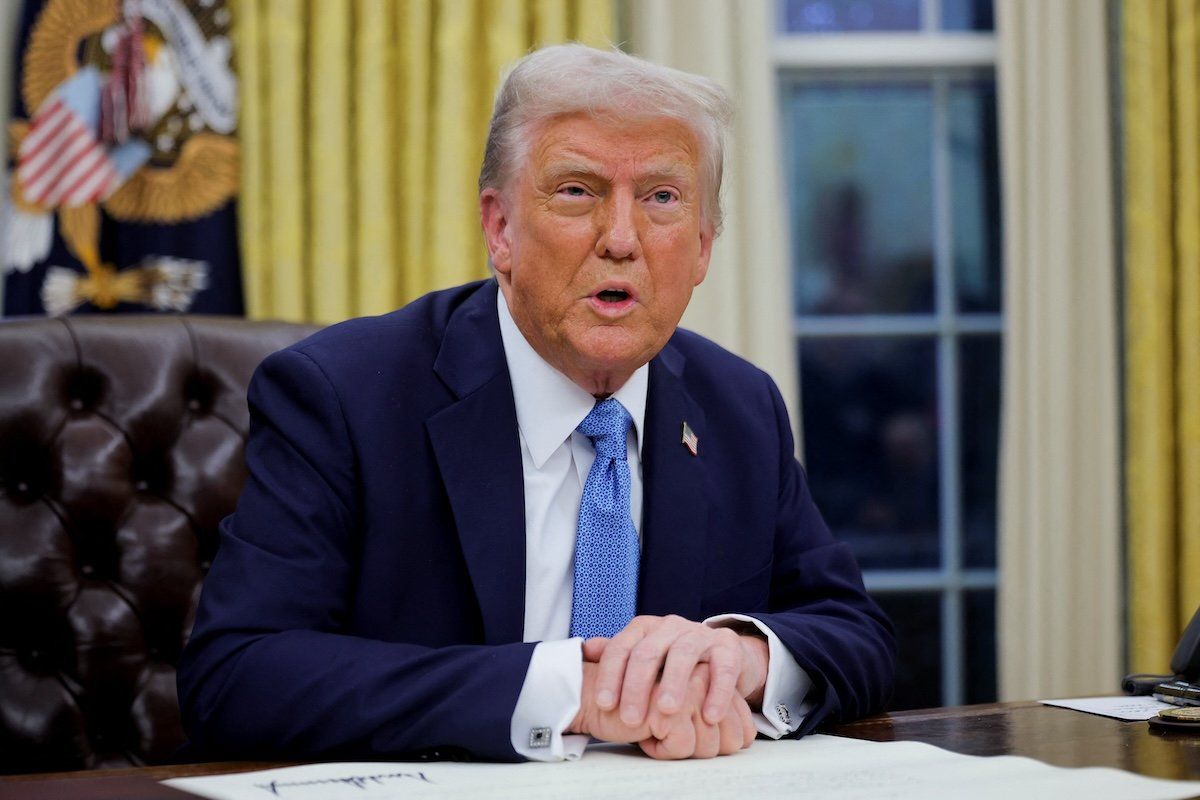Trump imposes massive tariffs on Canada, Mexico, and China
In a stunning blow for America’s top three trade partners, including two of its closest allies, President Donald Trump on Saturday imposed high tariffs on products coming into the United States from Canada, China, and Mexico. The tariffs take effect on Tuesday.
Products imported from China will face a 10% tariff, while Canada and Mexico must pay 25% duties. Trump did make an exception: He imposed a lower rate of 10% on Canadian energy imports. But that's not all. The US president also threatened to escalate tariffs further if any of the countries retaliated, which two have already done.
Canadian Prime Minister Justin Trudeau responded to Trump's move late Saturday, retaliating with a rollout of 25% tariffs on $155 billion worth of US imports. This will impact US products such as orange juice, coffee, and peanut butter, and could eventually impact cars and steel products. Mexican President Claudia Sheinbaum, meanwhile, also retaliated with "tariff and non-tariff measures in defense of Mexico's interests," but she did not specify the rates.
China also responded with plans to implement countermeasures and called Trump's tariffs a "serious violation" of international trade rules. Beijing intends to challenge the tariffs at the World Trade Organization.
How much trade? Total US turnover with Canada and Mexico each year is about $1.8 trillion, three times the volume with China. The US trade deficit with China is its largest, nearing $300 billion last year, followed by Mexico at more than $160 billion. The deficit with Canada is about $60 billion.
Major imports from Canada and Mexico include automobiles and auto parts. Oil is the single largest US import from Canada (why? See here). The US also imports a sizable volume of agricultural products from Mexico. Imports from China, meanwhile, include a raft of machinery products, electronics, and toys.
What is the aim? It's not entirely clear. Trump believes in the power of tariffs to rebalance trade and create more US manufacturing jobs.During his first term, he revised the 1994 NAFTA free trade agreement with Mexico and Canada, addressing loopholes concerning the national origin of auto components and labor protections. This resulted in the United States-Mexico-Canada Agreement, which these new tariffs would appear to violate.
China, meanwhile, is already under a welter of tariffs imposed by both Trump’s first administration and the Biden administration. These focus on a range of products in advanced technology, natural resources, EV production, and medical supplies.
Trump has recently blamed all three countries for allowing undocumented migrants and illegal drugs to enter the US, but he hasn’t laid out specific benchmarks for removing the new tariffs. On Saturday, he said the tariffs are being used to force the countries to halt the flow of fentanyl into the US.
What will the effect be? Chaotic and potentially expensive, at least in the short term. Complex North American supply chains, particularly in the auto industry, could be disrupted. And as companies in Canada, Mexico, and China simply pass along the cost of the tariffs to US consumers, Americans could see higher prices at the pump and the register for a range of goods.
Retaliation. Rather than turn the other cheek, Canada and Mexico are likely to slap back, imposing retaliatory tariffs of their own, which could harm American export industries.
But Trump seems to be willing to run those risks. For months, he has threatened to take a staggering turn towards protectionism. Now he’s doing it, and he's taking direct aim at the largest trade relationships in the world. Buckle up.
